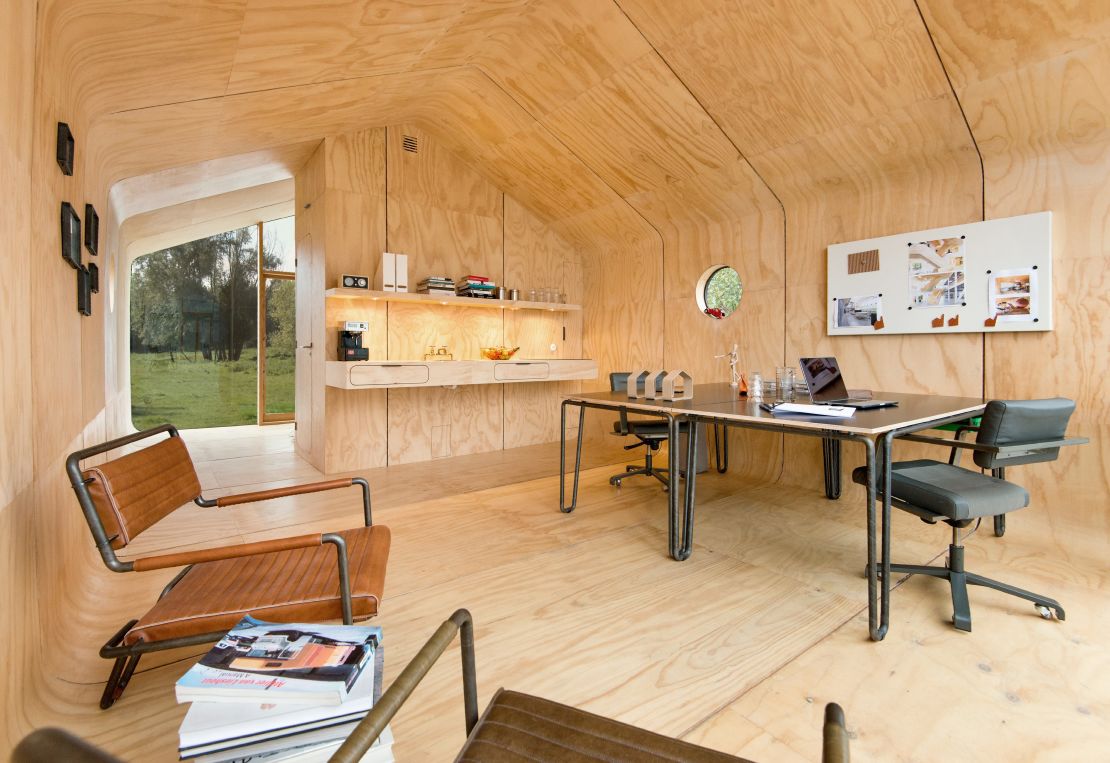Why build with traditional bricks and mortar when you can use something a little more unconventional? That’s the ethos behind one company in the Netherlands that uses cardboard to create their eco-friendly houses. Wikkelhouse, meaning “wrapped house” in Dutch, produces houses wrapped in layer upon layer of cardboard. Homes are priced from €25,000 ($26,473), excluding transportation and construction costs.
Co-director Oep Schilling launched the company back in 2012 with his partner and the inventor of the concept, Rene Snel.
“When I saw the beauty and atheistics of the house and the machine used to build it, I thought, ‘Wow, this has potential.’ It’s green and it’s beautiful,” Schilling. said.
According to Schilling, his houses are on average three times more environmentally friendly than regular buildings.

Unlike traditional homes that are built from the ground up, a Wikkelhouse is created in segments and assembled at the company’s Amsterdam warehouse. To create each segment, corrugated cardboard is wrapped around a mold 24 times. Layers are bonded with an environmentally friendly glue.
“The trick, of course, is it to keep wrapping,” Schilling said. “Essentially you are sandwiching these layers together, and this is what helps gives the house its strength.”
The wrapping technique also gives the Wikkelhouse its uniquely curved shape.
“There is no straight line where the floor meets the wall, or the wall the ceiling,” said Schilling. “It flows from one to the other, and this round shape creates a stronger structure.”
The added bonus of the Wikkelhouse’s wrapping technique is the natural insulation created when air is trapped between each layer of corrugated cardboard.
How long can it last?
Of course, the key problem with any product made of cardboard is water. To protect the house from the elements, the exterior is wrapped in a water-resistant, breathable foil. It is then covered with wooden cladding, while the inside is finished with plywood.
No one really knows how long the houses will last. The company has guaranteed them for 15 years, but Schilling believes they’ll last for 50 years or more.
“The key with the house, as with anything, is to maintain it. If you protect paper the right way, like antique books, they can last a long time,” said Schilling.

The company made its first house four years ago, for Amsterdam’s Schiphol Airport. Designed originally as a showroom, it now serves as a coffee bar.
Since then they have made 10 more houses, with another 10 in production. Most are in the Netherlands, but one has just been erected on a rooftop in East London, and another is underway in Germany.
“The thing I like most about the Wikkelhouse is that it’s such an inspiring concept,” said Shilling. “Of course, in the future, not all houses will be made from cardboard. But it’s a different way of looking at how we create our homes, and a reminder that you don’t have to do things the way they’ve always been done.”













